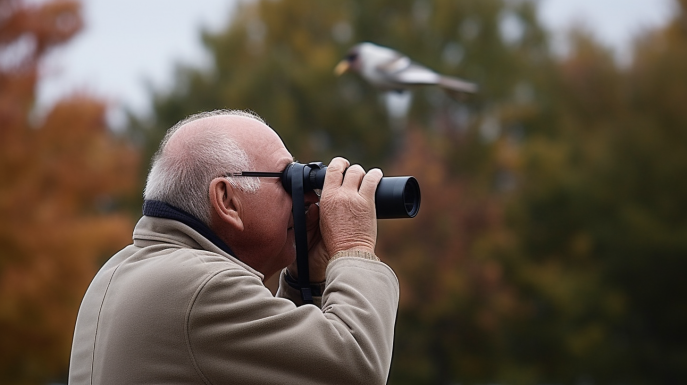Delve into the art of wildlife observation with the right gear and mindset. Witnessing animals in their natural habitat is a privilege that demands respect for both the creatures and their surroundings. The key to a remarkable wildlife encounter lies in allowing animals to behave naturally, undisturbed by human interference.
Personalize your gear with stickers! Check out our favorite pick here
Ensuring the safety of wildlife and visitors alike requires exercising good judgment and employing the appropriate equipment.
What to Bring:
Binoculars/Spotting Scope – Your window into the wild! Experience wildlife up close while maintaining a safe distance. Let the animals go about their business while you observe from a comfortable vantage point. Remember to keep your distance and retreat if approached by an animal.
Camera with zoom – Capture the magic of the wild with a camera equipped with zoom capabilities. Preserve fleeting moments without intruding on the natural rhythm of the environment. Don’t forget spare batteries for extended adventures.
ID Books – Arm yourself with field guides to identify the creatures you encounter. Whether in print or digital form, these resources are invaluable for species identification.
Journal/Field Book – Document your observations and sketches in a journal for future reference. These records serve as mementos of your wildlife encounters and aid in tracking patterns over time.
iNaturalist app – Join the community of citizen scientists with the iNaturalist app. Contribute to scientific knowledge while exploring nature’s wonders.
Sun Protection – Shield yourself from the sun’s rays with appropriate attire and sunscreen. Ensure comfort during extended observation periods with long-sleeved clothing, hats, and sunglasses.
Water – Stay hydrated during your outdoor excursions to maintain energy and focus.
Bear Spray – For visits to bear country, carry bear spray as a precautionary measure. Familiarize yourself with its usage for added safety.
What to Leave Behind:
Food for animals – Refrain from feeding wildlife to prevent harm to both animals and humans. Human food consumption can lead to health issues and alter animals’ natural behaviors, posing risks to both parties.
Animal/bird calls – Avoid mimicking animal sounds, as it can disrupt wildlife and disturb nesting sites. Respect the natural order by refraining from such activities.
Spotlights/laser pointers – These items can disturb wildlife and are prohibited in certain areas. Respect park regulations and opt for non-intrusive observation methods.
Pets – Leave pets at home or abide by park regulations regarding pet access. Unleashed pets can disrupt wildlife and pose safety risks to both animals and visitors. Be a responsible pet owner by adhering to park rules and regulations.

